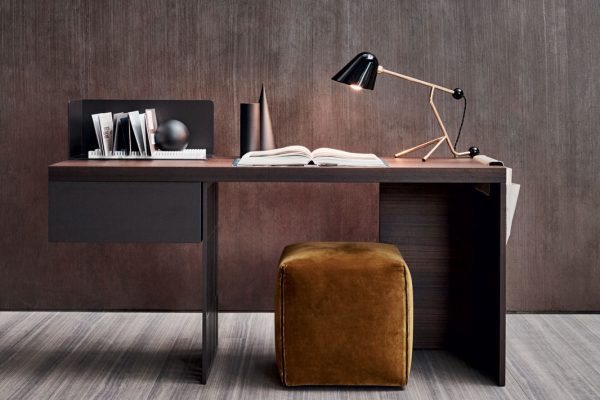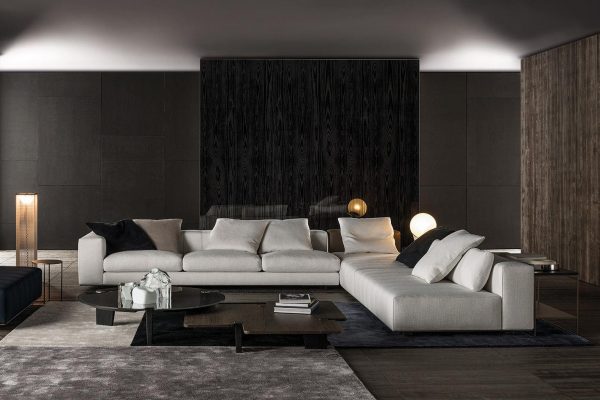Journey among some of the leading figures in the history of Italian design
There are timeless interior design icons that have entered our homes, hotels, and workplaces, making them more valuable, even when lines and shapes were so minimal as to seem almost obvious. Instead, they have survived time, changing styles, and renewing materials. All this is because they have represented the history of design, expressions of architectural and artistic currents and movements that have left a tangible mark, not only from an aesthetic point of view, but also from a socio-cultural one.
In Italy, the term “design” made its appearance in the common lexicon in the late 1800s. It was not until the 1960s that this industry began to flourish, thanks to leading personalities who brought the flair and quality of Made in Italy production to the world. The Italian masters who have ploughed through architecture and interior design in the last century have irreversibly changed the history of design, leaving behind timeless furniture and accessories with shapes and materials that are always current, even though they have often evolved along with us, yet always remaining faithful to their origins.
Achille Castiglioni: design in the service of functionalism.
“If you are not curious, leave it alone.” This was the motto of Achille Castiglioni, an architect and designer born in 1944 and younger brother of architects Livio and Pier Giacomo. A child of rationalism, Castiglioni thought that every design concept should be linked to a function, as for him design was problem solving, and it must be led by essential elements. Throughout his career he has supported the theory that. “there must be irony, both in design and in objects.”
Castiglioni conceived and created a series of design icons. Among the most famous and enduring is Arco, a lamp, designed for Flos, that hides a great little curiosity. It was the first industrial design object to be granted copyright protection on a par with a work of art.
When he created it, designer Arco was inspired by street lighting, where suspended lamps are able to illuminate every corner of the city. Arco, in fact, represents freedom of movement combined with the freedom to create new plays of light and shadow within one’s environment. With the rigor of its lines and attention to the combination of materials, it is a hybrid product with a vocation for suspension.
It is the lamp that established new rules in the interaction between table and light fixture, freeing it from its fixed position at the ceiling. An advantage that becomes practicality: since it can be placed almost anywhere, it arrives directly with the point of light at the desired location.
Standing 2 meters and 5 centimeters tall, Arco has as its base a 65-kilogram white Carrara marble parallelepiped with beveled corners. The hole in the center of gravity supports an arched stem, consisting of three telescopic stainless steel elements, which adjust the width of the arm and the height of the light source. The dome-shaped hat is a perforated cap, on which rests an aluminum ring with an adjustable position. In this way its position can be changed, depending on the height of the third sector of the arc.
Vico Magistretti and his sinuous and visionary design
“Design is also looking at everyday objects with a curious eye.” Word of Vico Magistretti, who made it a mantra throughout his career. Born in 1920 and died in 2006, he graduated from the Milan Polytechnic in 1945 and was an architect, interior and industrial designer, working with companies such as Artemide, Cassina, De Padova, Flou, Fritz Hansen, Kartell and Schiffini.
Also an exponent, like Castiglioni, of rationalism, he added a plus: for the first time, the creation of everyday objects was done by architects.
The idea of simplicity and its brilliant and innovative style created sinuous yet essential shapes, functional and durable materials. For Magistretti, a good design concept is primarily the answer to a technical problem that needs to be solved. His was a need that was reflected in a very practical design approach, the result of continuous dialogue with manufacturers.
An example of this is the fact that he never developed a detailed drawing of the Eclisse table lamp, a design icon with a singular and legendary history, from its conception. It all begins in 1963, on the Milan subway. Reading Victor Hugo’s Les Miserables , Magistretti began to think about Jean Valjean’s lantern described in the novel. A moment later in his head a thief’s semi-blind lantern turns into a table lamp. Not to miss the sudden creative flash, he takes the subway ticket and throws down a sketch on the back.
The design concept involves three hemispheres: two fixed ones – the base and the outer canopy – and a movable inner canopy. Hence the idea of adding the metaphor of the astronomical phenomenon: symbolizing the Sun-Earth-Moon system, the three hemispheres simulate what happens during eclipses of the Moon, when the Earth’s cone of shadow totally or partially invests the lunar globe. Similarly, the inner dome rotates, totally or partially covering the light emission of the bulb.
The user is free to graduate the light beam to achieve soft and shielded or diffuse and homogeneous lighting-this is also a small revolution. In addition to the creation, the production history is also curious. As there is no detailed drawing, it seems that the concept of this iconic lamp was told over the phone and understood by the manufacturer.
Ettore Sottsass, eclectic shapes and colors for timeless design
Color, unusual shapes, and inexpensive materials. Ettore Sottsass, an architect and designer born in 1917 and a graduate of the Polytechnic University of Turin, designed furniture, jewelry, glass, lighting, household objects and office machine design, as well as many buildings and interiors, during his truly multifaceted career.
Among other collaborations, he has worked for Knoll, Esprit, Olivetti, Alessi, Brondi, Poltronova, and Fiorucci. Known as the founder of the Memphis Current, the design collective that set out to counter the principles of rationalist design, Sottsass set out to redefine the very idea of style through bold colors, unusual shapes and inexpensive materials.
In his philosophy, there was always a desire to explore deeper, beneath the surface of the objects he designed, and he argued that everyone should find their own, original and unique way of doing things. Among his most significant works are the Caliph sofa, the cubirolo dresser, and pieces from the gray furniture series for Poltronova, as well as rarer objects such as the flying carpet chair, where the apparent lightness with which he combines pop culture and the spirituality of the hippie era is depicted. Objects such as the dining chair for Alchemy and other Memphis pieces testify to his unique formal language.
Alessandro Mendini, between postmodernism and re-design
“I treat objects as if they were human beings, I make them smile.” A multifaceted personality, full of nuances, the same ones he projected onto his works. Alessandro Mendini, was a leading figure in the world of interior design. During his career, he was editor of Casabella and Domus, simultaneously creating works in graphic design, furniture, interiors, painting and architecture.
Major brands he has collaborated with include Alessi, Swatch, Kartell, to name but a few. Above all, he was an active member of the radical Italian anti-design movement. His aesthetic references, as a postmodernist as he called himself, found inspiration in a huge variety of areas, from literature to art. He had a design approach defined as “re-design,” indicating a desire to give new meaning or perspective to everyday objects.
Mendini’s activity has marked architecture, design and more generally contemporary culture with both his theoretical and design work. Among his most famous pieces is the Proust armchair, a perfect example of what he called “re-design,” the practice of intervening with decorations on found objects and famous design icons. Since 1978, the Proust has been an object that, although in its many variations (it began as a one-of-a-kind piece and then went on to limited editions as well as industrial production), is and will remain firmly in the cult empyrean.



